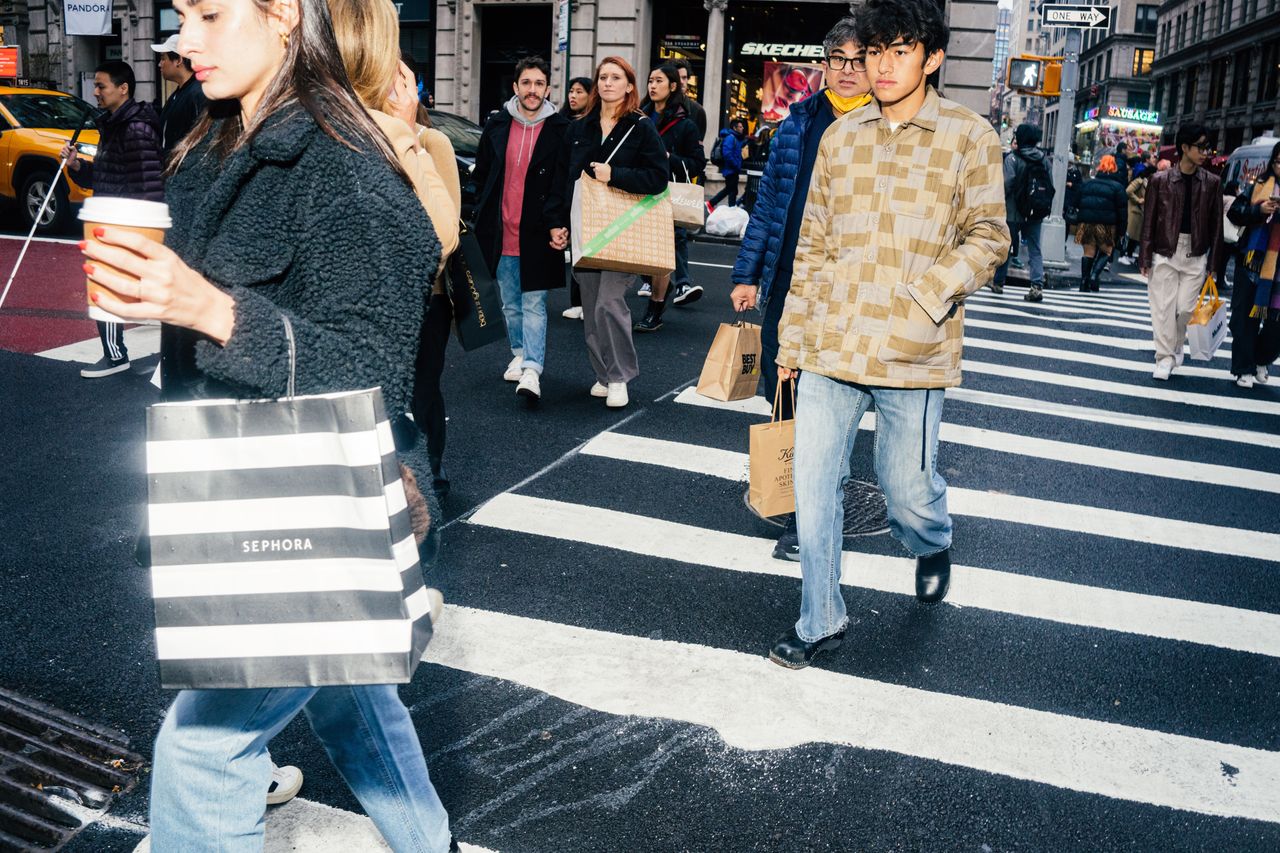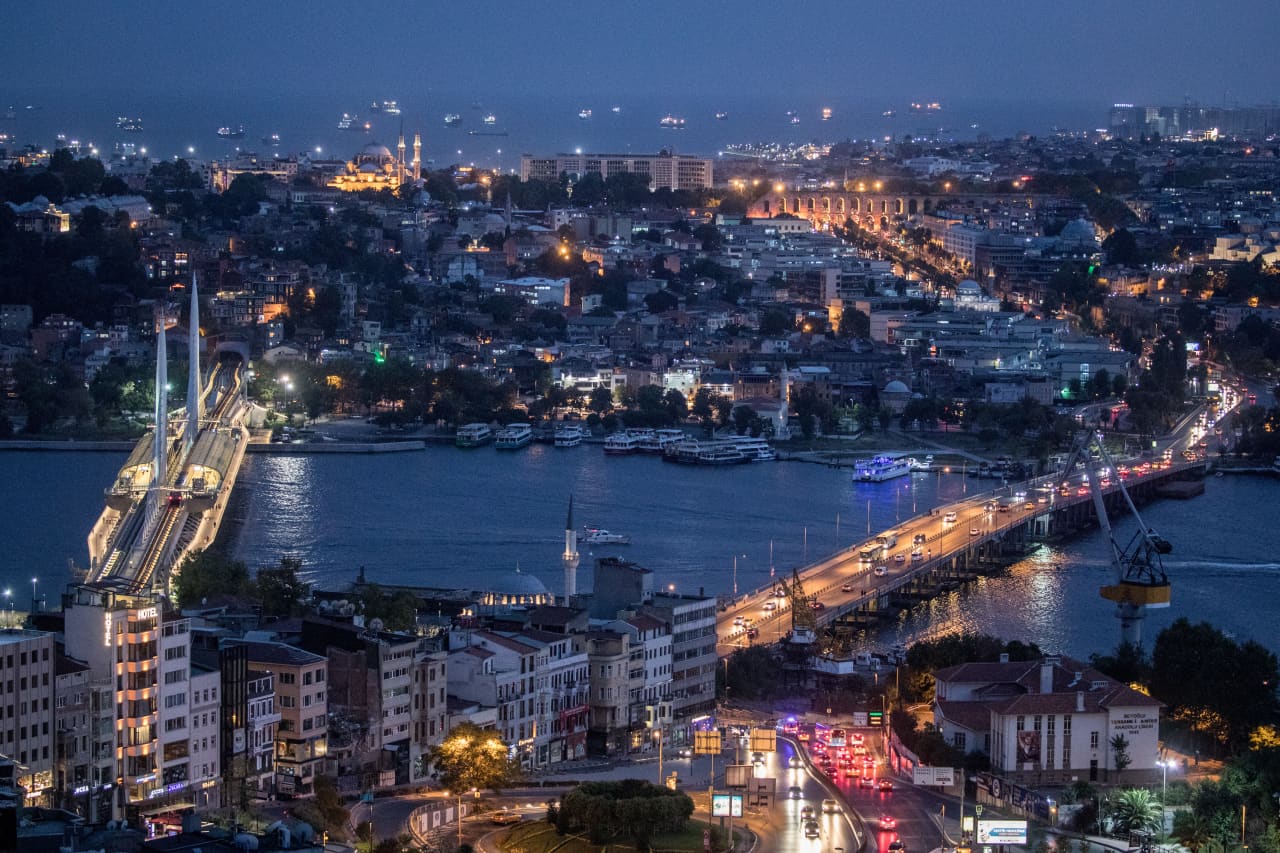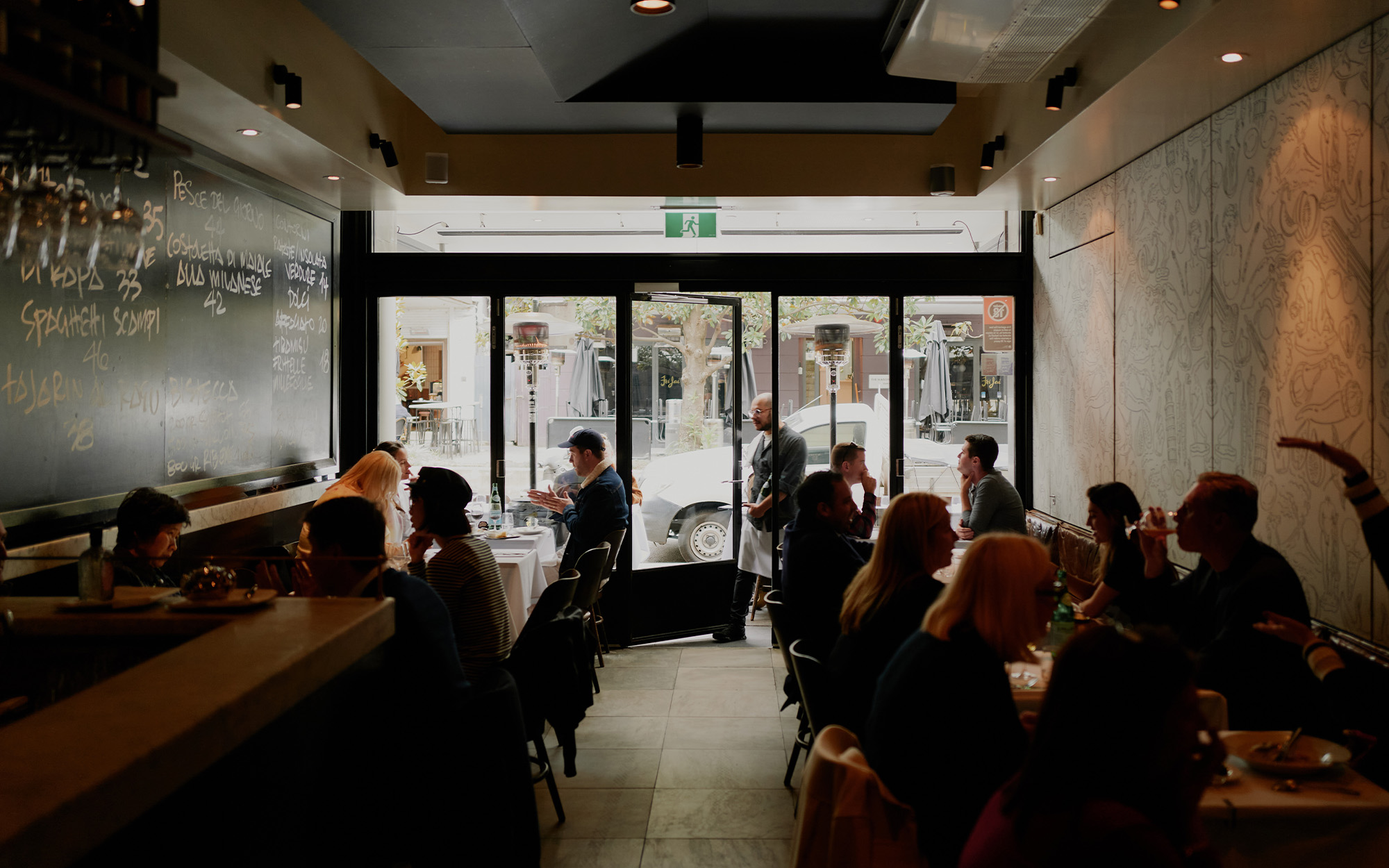Black Friday Lured Shoppers Back, in Early Test for Holiday Spending
Stores on average welcomed more consumers compared with last year, industry data show
Americans returned to their pre pandemic habits on Black Friday as they spent more time and money in stores than last year, but some data show they were also cautious with spending as inflation weighs on their pocketbooks.
The boost in store traffic over Black Friday comes after a surge last year from 2020, the first year of the Covid-19 pandemic when many shoppers favoured buying online. Shoppers still bought items online this year, but many browsed in stores, revelling in a holiday tradition, according to early data. Some consultants and industry groups have predicted slower sales growth for the overall holiday season compared with last year.
Shoppers who held off on purchases are betting on even better deals in the days leading up to Christmas, which falls on a Sunday this year, according to shoppers and retail executives. High gasoline and grocery prices are also weighing on many households.
Chloe Gonzales woke up at 4 a.m. in Austin, Texas, to do some Christmas shopping and look for winter clothes on Black Friday. “People are less fearful about going out now,” Ms. Gonzales said. “They’re not as worried about Covid.”
Ms. Gonzales said she has found good deals this year, but added that she is spending a little more money compared with last year. This time, she found a leather jacket for 50% off. “I like the thrill of going out shopping and finding a good deal,” Ms. Gonzales said.
Store traffic rose 7% this Black Friday compared with last, said RetailNext, a firm that tracks shopper counts in thousands of stores with cameras and sensors. In-store sales rose 0.1%, and the average shopper spent less per visit than last year, according to the firm. Sensormatic Solutions, another firm that analyses store traffic, said Black Friday traffic rose 2.9% compared with 2021.
Black Friday had been losing importance before the pandemic hit as shoppers spread out holiday shopping, grabbing earlier deals or buying more online. This year is “a bit of a return to normalcy,” said Brian Field, global head of retail consulting for Sensormatic.
Sales on Black Friday rose 12% from last year, according to Mastercard SpendingPulse, which measures in-store and online retail sales across all forms of payment. The report excludes auto sales and isn’t adjusted for inflation, meaning that it could reflect people paying higher prices for goods than they did in 2021.
Consumers were deal-driven, said Steve Sadove, senior adviser for Mastercard and former chief executive of department-store chain Saks Inc. “Apparel, electronics and restaurants were strong-performing sectors as consumers turned holiday shopping into a full-day experience,” he said.
This holiday many retailers entered the season, which they often rely on for a significant percentage of their annual sales, with too much inventory. To clear those goods, a slew of retailers are offering heavy discounts, a move that can eat into their profits.
Consumers are also feeling less bullish about their economic prospects. Last week the University of Michigan released its November consumer-sentiment index, which fell 5.2% compared with October and is down 16% compared with November 2021.
Amid persistent inflation, retailers including Walmart Inc. and Target Corp. said shoppers were spending less on discretionary items heading into the holidays. Some chains including Macy’s Inc., Kohl’s Corp. and Target said sales slowed in October and early November. Some executives expect shoppers to delay holiday purchases until closer to Christmas.
It has been “kind of a lukewarm Black Friday,” said David Bassuk, global co-leader of the retail practice at AlixPartners, a consulting firm. “It’s more of an experience than it is a purchasing moment,” he added.
Retailers are playing a game of chicken with shoppers looking for deals, Mr. Bassuk said. For a retailer, leaving the holiday season without moving enough inventory is a disaster, he said. “That’s why the discounts get deeper every week,” Mr. Bassuk said.
Online sales on Black Friday rose 2.3% to $9.12 billion from last year, according to Adobe Analytics, which tracks spending on websites. On Thanksgiving people spent $5.3 billion online, up 2.9% from the holiday last year, according to Adobe.
For many shoppers, Black Friday shopping is a family pastime, regardless of how much is spent.
Lazaro Allen, an artist living in New York City, visited a Best Buy Co. store in nearby Mount Vernon, N.Y., in search of a 65-inch television. He planned to head to Macy’s next to buy gifts.
“There are so many TVs here,” he said, looking down the aisles. He said inflation hasn’t taken a significant toll on his finances, and he went to stores on Friday more out of tradition than because he expected major deals.
This month, the National Retail Federation predicted sales would rise between 6% and 8% to between $942.6 billion and $960.4 billion from Nov. 1 through Dec. 31. The figures exclude spending at car dealers, gasoline stations and restaurants and aren’t adjusted for inflation.
Lauren Pote, a 47-year-old clinical psychologist, said she is being more selective in what she is buying this year, because everything costs more. “It may take me a bit longer to buy gifts this year, because I’m really hunting for the sales,” said Ms. Pote, who was shopping with her family on Friday at the SoNo Collection Mall in Norwalk, Conn.
She bought a sweatshirt for her son from Hollister that was 40% off. “I don’t typically shop on Black Friday,” Ms. Pote said, “but it was raining and we wanted to get out of the house.”
—Suzanne Kapner, Adolfo Flores and Sharon Terlep contributed to this article.
 Copyright 2020, Dow Jones & Company, Inc. All Rights Reserved Worldwide. LEARN MORE
Copyright 2020, Dow Jones & Company, Inc. All Rights Reserved Worldwide. LEARN MORE
This stylish family home combines a classic palette and finishes with a flexible floorplan
Just 55 minutes from Sydney, make this your creative getaway located in the majestic Hawkesbury region.
As Paris makes its final preparations for the Olympic games, its residents are busy with their own—packing their suitcases, confirming their reservations, and getting out of town.
Worried about the hordes of crowds and overall chaos the Olympics could bring, Parisians are fleeing the city in droves and inundating resort cities around the country. Hotels and holiday rentals in some of France’s most popular vacation destinations—from the French Riviera in the south to the beaches of Normandy in the north—say they are expecting massive crowds this year in advance of the Olympics. The games will run from July 26-Aug. 1.
“It’s already a major holiday season for us, and beyond that, we have the Olympics,” says Stéphane Personeni, general manager of the Lily of the Valley hotel in Saint Tropez. “People began booking early this year.”
Personeni’s hotel typically has no issues filling its rooms each summer—by May of each year, the luxury hotel typically finds itself completely booked out for the months of July and August. But this year, the 53-room hotel began filling up for summer reservations in February.
“We told our regular guests that everything—hotels, apartments, villas—are going to be hard to find this summer,” Personeni says. His neighbours around Saint Tropez say they’re similarly booked up.
As of March, the online marketplace Gens de Confiance (“Trusted People”), saw a 50% increase in reservations from Parisians seeking vacation rentals outside the capital during the Olympics.
Already, August is a popular vacation time for the French. With a minimum of five weeks of vacation mandated by law, many decide to take the entire month off, renting out villas in beachside destinations for longer periods.
But beyond the typical August travel, the Olympics are having a real impact, says Bertille Marchal, a spokesperson for Gens de Confiance.
“We’ve seen nearly three times more reservations for the dates of the Olympics than the following two weeks,” Marchal says. “The increase is definitely linked to the Olympic Games.”

Getty Images
According to the site, the most sought-out vacation destinations are Morbihan and Loire-Atlantique, a seaside region in the northwest; le Var, a coastal area within the southeast of France along the Côte d’Azur; and the island of Corsica in the Mediterranean.
Meanwhile, the Olympics haven’t necessarily been a boon to foreign tourism in the country. Many tourists who might have otherwise come to France are avoiding it this year in favour of other European capitals. In Paris, demand for stays at high-end hotels has collapsed, with bookings down 50% in July compared to last year, according to UMIH Prestige, which represents hotels charging at least €800 ($865) a night for rooms.
Earlier this year, high-end restaurants and concierges said the Olympics might even be an opportunity to score a hard-get-seat at the city’s fine dining.
In the Occitanie region in southwest France, the overall number of reservations this summer hasn’t changed much from last year, says Vincent Gare, president of the regional tourism committee there.
“But looking further at the numbers, we do see an increase in the clientele coming from the Paris region,” Gare told Le Figaro, noting that the increase in reservations has fallen directly on the dates of the Olympic games.
Michel Barré, a retiree living in Paris’s Le Marais neighbourhood, is one of those opting for the beach rather than the opening ceremony. In January, he booked a stay in Normandy for two weeks.
“Even though it’s a major European capital, Paris is still a small city—it’s a massive effort to host all of these events,” Barré says. “The Olympics are going to be a mess.”
More than anything, he just wants some calm after an event-filled summer in Paris, which just before the Olympics experienced the drama of a snap election called by Macron.
“It’s been a hectic summer here,” he says.

AFP via Getty Images
Parisians—Barré included—feel that the city, by over-catering to its tourists, is driving out many residents.
Parts of the Seine—usually one of the most popular summertime hangout spots —have been closed off for weeks as the city installs bleachers and Olympics signage. In certain neighbourhoods, residents will need to scan a QR code with police to access their own apartments. And from the Olympics to Sept. 8, Paris is nearly doubling the price of transit tickets from €2.15 to €4 per ride.
The city’s clear willingness to capitalise on its tourists has motivated some residents to do the same. In March, the number of active Airbnb listings in Paris reached an all-time high as hosts rushed to list their apartments. Listings grew 40% from the same time last year, according to the company.
With their regular clients taking off, Parisian restaurants and merchants are complaining that business is down.
“Are there any Parisians left in Paris?” Alaine Fontaine, president of the restaurant industry association, told the radio station Franceinfo on Sunday. “For the last three weeks, there haven’t been any here.”
Still, for all the talk of those leaving, there are plenty who have decided to stick around.
Jay Swanson, an American expat and YouTuber, can’t imagine leaving during the Olympics—he secured his tickets to see ping pong and volleyball last year. He’s also less concerned about the crowds and road closures than others, having just put together a series of videos explaining how to navigate Paris during the games.
“It’s been 100 years since the Games came to Paris; when else will we get a chance to host the world like this?” Swanson says. “So many Parisians are leaving and tourism is down, so not only will it be quiet but the only people left will be here for a party.”
This stylish family home combines a classic palette and finishes with a flexible floorplan
Just 55 minutes from Sydney, make this your creative getaway located in the majestic Hawkesbury region.






















